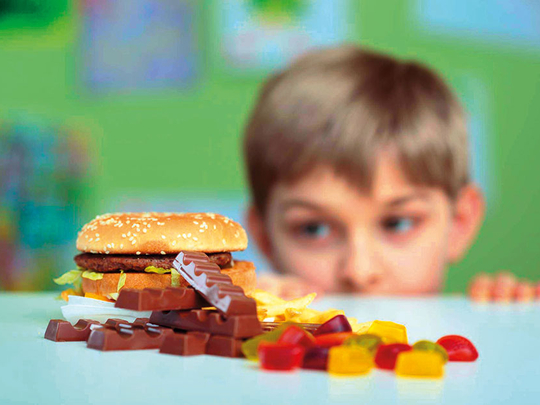
Leading obesity experts are considering litigation against the food industry in the light of emerging research suggesting that junk food marketing could hijack a child’s brain.
Neuromarketing is of growing interest to food companies. Fast food, soft drinks and snack companies increasingly interact with children through social media and online games. Some are beginning to probe further, gathering information through brain scans about how unconscious decisions are made to eat one snack rather than another and targeting people’s susceptibilities. A report on food neuromarketing to children by the Centre for Digital Democracy in 2011 predicted “an explosive rise in new tactics targeted especially at young people”.
Frito-Lay, a subsidiary of PepsiCo, is one of those known to be taking an interest. It hired a neuromarketing firm to explore what happened in people’s brains when they ate Cheetos, its brand of cheese-tasting puffs. Brain scanning technology found that people derived a sort of guilty pleasure from the sensation of having their fingers coated with orange dust.
This revelation was behind an advertising campaign called the Orange Underground, playing on that sense of rebellion, featuring a group of snack-food anarchists who covered their faces with scarves made of Cheetos. In 2009 it won a grand award from the Advertising Research Foundation in the US.
Research has also shown that it is possible to train people’s brains to prefer one food over another. A paper in the Journal of Cognitive Neuroscience in 2014 by Tom Schonberg, a neuroscientist at the University of Texas, Austin, found that making people pay more attention to one junk food than another affected their decisions in the long term. Back in the real world, they were more likely to choose the one they had been “trained” to like through greater exposure to it.
It could go much further, says Kelly Brownell, one of the world’s leading obesity researchers and campaigners. Brownell, professor of psychology and neuroscience and dean of the Sanford School of Public Policy at Duke University in the US, says the most interesting studies have not yet been done.
Eating sugary, high salt and high fat foods has an effect on a child’s metabolism. “I would be interested to see what effects are produced by just looking at the advertising,” said Brownell.
Other possible avenues for litigation are over the soaring cost of obesity-related health care
“Does food marketing hijack the brain? There is very interesting neuroscientific research looking at the impact of sugar on the brain. If one proved that the brains of children are being hijacked by marketing, it could open up possibilities for legal action. Companies could be held liable for being engaged in illegal activity if it causes harm.”
Brownell told the European Congress on Obesity in Vienna that enough studies have been done looking at the extent of junk food marketing and its impact on children. Scientists and activists were concerned, but, he said, “those people are convinced already”.
They needed to take the fight to the industry and impact the public and policymakers alike. Lawsuits against food companies for harm to children caused by their junk food marketing would have a big impact. It would also outrage parents and enlist them in the fight.
Other possible avenues for litigation are over the soaring cost of obesity-related health care in every country, he said, especially for children.
Jason Halford, professor of biological psychology and health behaviour at the University of Liverpool and past president of the European Association the Study of Obesity, said science was beginning to show children’s vulnerability to advertising. There were suggestions of a change in brain function.
“There are studies coming out of the US showing when children who are obese see fast food adverts, they react to the logo,” he said. The science could open the way to lawsuits.
“If we could show there is a biological vulnerability, it is a game-changer. I think there will come a time when we can demonstrate it. You have a vulnerable child and are exploiting that child for commercial gain at the expense of the child’s health.”
Tim Lobstein, policy director of the World Obesity Federation, suggested another legal issue to raise with the big companies. “Companies are very protective of their brands. By owning a brand you own a bit of the market,” he said.
They threaten legal action against people who use the brand name or logo inappropriately, Lobstein points out — yet companies like Coca-Cola run social media marketing campaigns encouraging people to take pictures of themselves, smiling and waving, with branded props like the huge red Coca-Cola Christmas truck that tours the UK.
“When it comes to social media, the companies are very happy for people to use the brand in a wide variety of situations at home, in the street, at parties, and do nothing to protect the use of their trademark material. It is clearly two-faced and hypocritical,” he said.
An Advertising Association spokesperson said: “The advertising industry in the UK is very aware of its responsibilities towards marketing to children, and the Committees of Advertising Practice (Cap) codes recognise this through specific protections for under-16s.
“Cap carried out a comprehensive review of advertising to children in 2016 and the codes were reviewed, updated and strengthened last year. The changes mean that whether children are watching content on TV or via the internet and online activities that include advergames, they are subject to the same protections, which was not the case previously.
“As young people’s media consumption habits have changed, so have the regulations governing these media. With this in mind, the Cap code is now being reviewed one year on from the changes to ensure they remain fit for purpose.”












